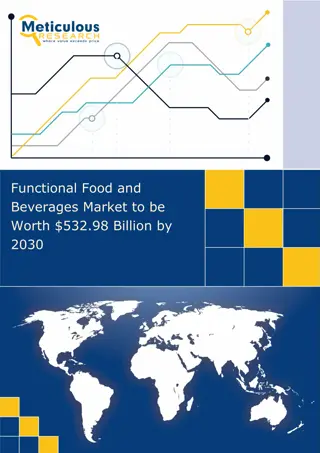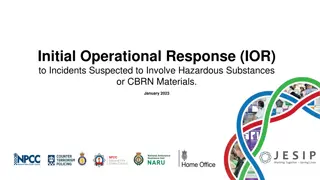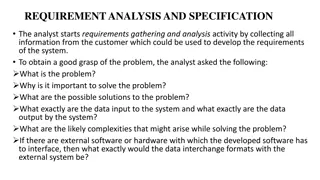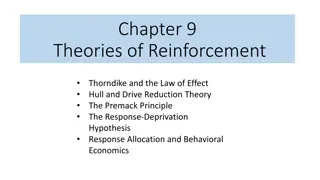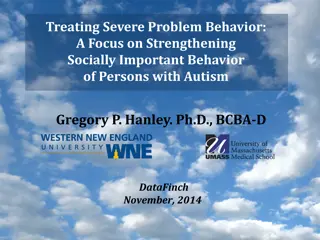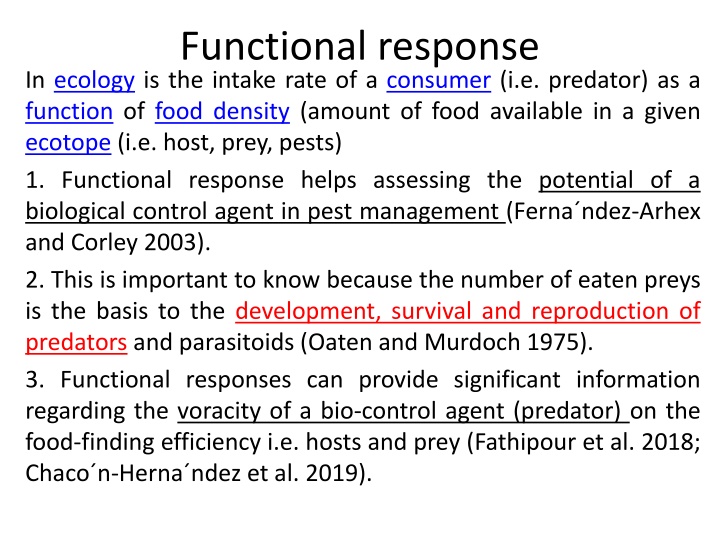
Functional Responses in Ecology for Pest Management
Explore the concept of functional response in ecology, which determines a predator's intake rate based on food density. This plays a crucial role in assessing biological control agents for pest management and understanding predator-prey dynamics. Different types of functional responses and their implications are discussed, highlighting the importance of factors like handling time and attack rate. Images and equations are included for better comprehension.
Download Presentation

Please find below an Image/Link to download the presentation.
The content on the website is provided AS IS for your information and personal use only. It may not be sold, licensed, or shared on other websites without obtaining consent from the author. If you encounter any issues during the download, it is possible that the publisher has removed the file from their server.
You are allowed to download the files provided on this website for personal or commercial use, subject to the condition that they are used lawfully. All files are the property of their respective owners.
The content on the website is provided AS IS for your information and personal use only. It may not be sold, licensed, or shared on other websites without obtaining consent from the author.
E N D
Presentation Transcript
Functional response In ecology is the intake rate of a consumer (i.e. predator) as a function of food density (amount of food available in a given ecotope (i.e. host, prey, pests) 1. Functional response helps assessing the potential of a biological control agent in pest management (Ferna ndez-Arhex and Corley 2003). 2. This is important to know because the number of eaten preys is the basis to the development, survival and reproduction of predators and parasitoids (Oaten and Murdoch 1975). 3. Functional responses can provide significant information regarding the voracity of a bio-control agent (predator) on the food-finding efficiency i.e. hosts and prey (Fathipour et al. 2018; Chaco n-Herna ndez et al. 2019).
Equation for Functional response: ??/?0= exp (?0+?1?0+ ?2 ?02+?3?03)/1+exp (?0+?1?0+ ?2 ?02+?3?03) Whereas, Na = number of eaten preys, No = number of offered preys P1 stand for linear, P2 for quadratic P3 for cubic coefficients and P0 is intercept These coefficients were estimated by the maximum likelihood (like and dislike) of predator to prey. Functional response types: I, II & III Type I: not significance means the environment does not change in favor of one species. There is a linear relation between prey density and the maximum number of prey killed. 1. prey population finds ample food at all times 2. Predators have limitless appetite
Type II: Significantly negative means proportion of prey consumed declines monotonically with its initial prey density provided. For example with Chrysoperla predator and pest, as the number of pest increases while Chrysoperla predator constant, the number of pest kills increases and then levels off (equal).
Type III: prey proportion fed is proportional to the density of prey provided (Juliano, 2001). It is similar to type II, proportion of the prey consumed is positively density-dependent over some regions of prey density. A functional response models help to evaluate two vital parameters: Handling time: the time needed to attack, consume, and digest the prey. Attack rate or searching efficiency: the rate at which a predator searches for finding its prey.
1. Many predators released as biocontrol agents have shown to exhibit a type II response on their prey (Xiao and Fadamiro, 2010). 2. Predators with higher Attack rate /searching efficiency (a) and lower handling time (Th) are better agents. Predators exhibiting the type III response are efficient biocontrol agents; Predator C. carnea (Neuroptera) (Homoptera). The interaction between C. carnea and M. persicae, without any green peach aphid food modifies the type of functional response as green lacewing presents a type II response when feeding on the green peach aphid. on M. persicae
Functional Response Parameters of Some Important Predators Examples Species Prey Prey stages References Amblyseius swirskii (mite) Type-II Maleknia et al. (2015), Karimi et al. (2014) Tetranychus urticae Egg+larvae Scolothrips longicornis (Thysanoptera) Type-II T. urticae T. viennensisae Pakyari et al. (2009), Farazmand et al. (2013) Egg+nymph Stethorus Gilvifrons (coleoptera)Type-III & II Mehrkhou et al. (2006), Karami and Shishehbor (2012) T. Urticae T. turkestani Eggs+ Nymph+larvae weaver ant, Oecophylla longinoda (Hymenoptera) Type-I &II Lepidoptera, Hemiptera, Diptera Larvae+nymphs+ad ults Fast et al. (2015) Paper wasp, Polistes dominulus (Hymenoptera) Type-III Shield beetle (Cassida rubiginosa) Coleoptera Schenk and Bacher (2002) Larvae
Species Prey Prey stages References Rhynocoris longifrons (Hemiptera) Type-II Dysdercus cingulatus (Pyrrhocoridae), Phenacoccus solenopsis (Pseudococcidae) Aphis gossypii (Aphididae) Nymph Sahayaraj et al. (2012) Nymph+adult Nymph+adult Rhynocoris marginatus (Heteroptera) Type-II Spodoptera litura (Lepidoptera) Larvae Ambrose and Claver (1996) Earwig, Doru lineare (Dermaptera) Type-II Spodoptera frugiperda (Lepidoptera) Larvae Sueldo et al. (2010) Ringlegged earwig,Euborellia annulipes (Dermaptera) Type-II Diamondback moth Plutella xylostella (Lepidoptera) Larvae+pupae Nunes et al. (2018) Dragonfly Tetragoneuria cynosura (Odonata) Type-II Midges Larvae Crowley and Martin (1989)



